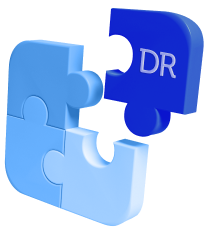Split Billing
Split billing is a billing method of dividing costs among multiple users or entities based on their respective usage or consumption.
What Is Split Billing?
Split billing refers to the practice of dividing and allocating the costs or charges associated with a subscription or usage among multiple entities or users. Split billing then becomes necessary to accurately allocate and distribute the costs among different users according to their specific usage and entitlements.
By implementing split billing, businesses can ensure that each user is responsible for their fair share of the costs, promoting transparency and cost-efficiency. It enables businesses to generate accurate customer bills or invoices by tracking and measuring individual usage metrics. This approach offers flexibility as customers have the ability to adjust their usage and associated costs on a pay-as-you-go basis.

What are the Applications of Split Billing?
Usage-Based Billing
Split billing can be employed in scenarios where a product or service is billed based on usage metrics, such as the number of users, bandwidth consumption, or storage capacity. With split billing, the costs can be divided among users or departments based on their individual usage levels.
Multi-Tenant Environments
In a multi-tenant environment where multiple customers or tenants share the same software instance, split billing enables the provider to allocate the costs, such as infrastructure, maintenance, or support, among the tenants based on their respective usage or agreed-upon sharing agreements.
Specialized Billing Models
Split billing can facilitate the implementation of specialized billing models for different features or modules within an offering. For example, if a SaaS platform offers various add-on features or premium services, split billing can be used to separately invoice customers for their usage of these additional functionalities.
Partner Settlements
In some cases, businesses may have partnerships or collaborations with other organizations or suppliers. Split billing can be utilized to streamline partner settlements by accurately tracking and dividing the revenue generated from joint customer subscriptions or usage.
White-Label SaaS Services
In white-label SaaS services, split billing enables the provider to allocate costs for different instances of the service to various clients who have rebranded and resold the service. This allows the original provider to track and bill each white-label client for their respective usage.
What are the Key Benefits of Split Billing?
Accurate Cost Allocation
Split billing ensures that costs are distributed fairly and accurately among different stakeholders or users. This allows for transparency and avoids overcharging or undercharging for services.
Cost Control and Savings
Split billing enables organizations to track and manage costs more effectively. By allocating expenses based on usage or specific parameters, businesses can identify areas of high expenditure and implement cost-saving measures.
Flexibility and Customization
Split billing allows for customization and flexibility in invoicing based on specific requirements. It can accommodate different pricing models, such as seat-based licensing or additional service charges, and adapt to the needs of different customers or user groups.
Transparency and Clarity
Split billing provides customers with a clear, itemized breakdown of the charges associated with their usage of a product or service. This transparency helps customers understand what they are being billed for and ensures that charges are aligned with their actual usage. This level of clarity fosters trust and confidence in the business, enhancing customer satisfaction.
What are the Challenges and Limitations of Split Billing?
Complexity in Cost Allocation
Split billing requires accurately determining and allocating costs among different entities or users. This can be challenging, especially when the usage of shared resources is not easily measurable or when there are multiple factors to consider in the cost allocation process.
Integration with Existing Systems
Implementing split billing may require integrating with existing billing systems, which can be challenging if the systems are outdated or not designed to handle split billing scenarios. Compatibility issues and the need for system modifications can add complexity to the implementation process.
Difficulty in Scalability
Split billing processes may become more complex and challenging to scale as the number of entities or users involved increases. Managing the cost allocation and billing for a large number of parties can become overwhelming and require robust systems and processes to handle the increased volume and complexity.
Administrative Burden
For businesses that still rely on manual processes, split billing can increase the administrative workload as it requires additional time and effort to accurately track, allocate, and manage the costs among different entities or users. This can result in errors and inaccuracies.
Technical Limitations
The implementation of split billing may require the use of advanced billing systems and/or data management platforms that can handle the complexity of volume and speed at which the transactions are flowing in, especially when real-time processing is required. Traditional billing systems that operate on batch processing or have processing delays may not be suitable for split billing scenarios.
What Are the Current Trends Involving Split Billing?
Collaborative and Sharing Economy
Split billing methods, such as shared billing or dividing expenses among multiple parties, have gained popularity in recent years. This trend can be attributed to the growing collaborative and sharing economy, where people and businesses are more open to sharing costs and resources.
Digital Payment Solutions
The advancements in technology and the rise of digital payment solutions have facilitated the implementation of split billing across industries. Digital platforms and payment applications often provide features to easily split expenses and allocate costs among multiple users, making split billing more convenient and efficient.
Conclusion
Split billing is a valuable practice that allows businesses to accurately allocate costs among multiple entities or users based on their individual usage and entitlements. By implementing split billing, businesses can promote transparency, cost-efficiency, and flexibility in billing processes. However, there are challenges and limitations associated with split billing, such as complexity in cost allocation and integration with existing systems. Despite these challenges, split billing is experiencing increasing adoption, fueled by the collaborative and sharing economy, as well as advancements in digital payment solutions.
Related Terms
People also ask
What is split billing in telecom?
Split billing in telecom is separating charges for different services, allowing customized billing models and better expense control for customers.
What is split-claim billing?
Split-claim billing divides a medical claim between multiple insurers, ensuring accurate payment allocation and maximizing coverage for patients and providers.



